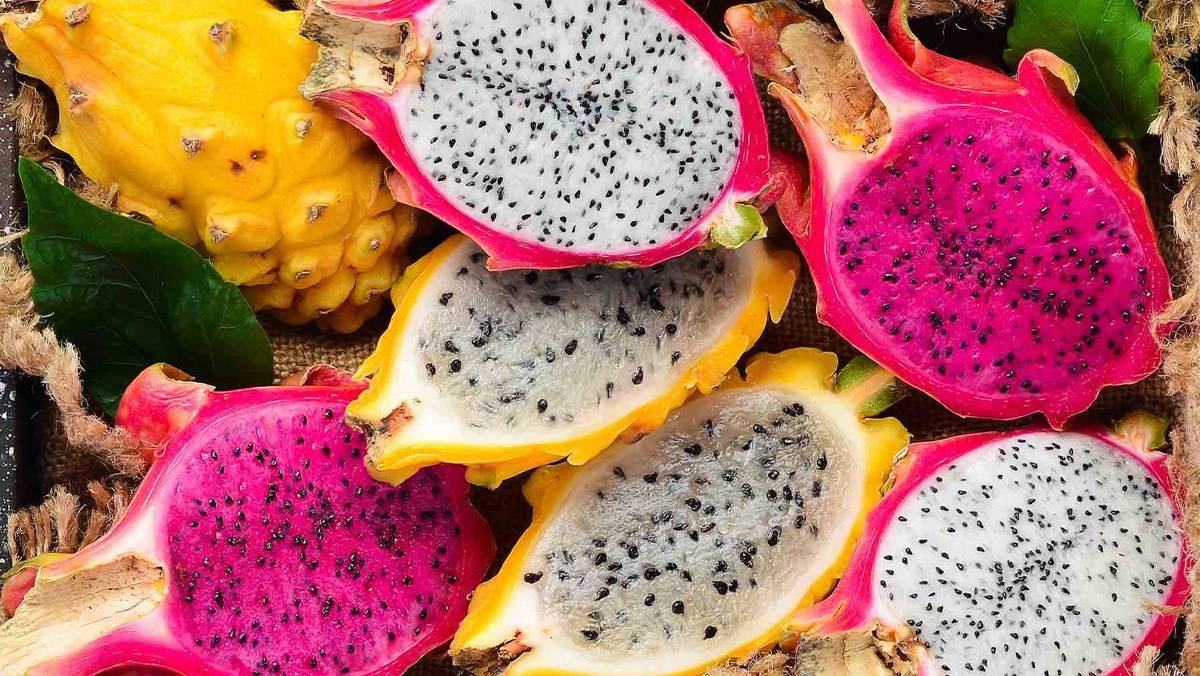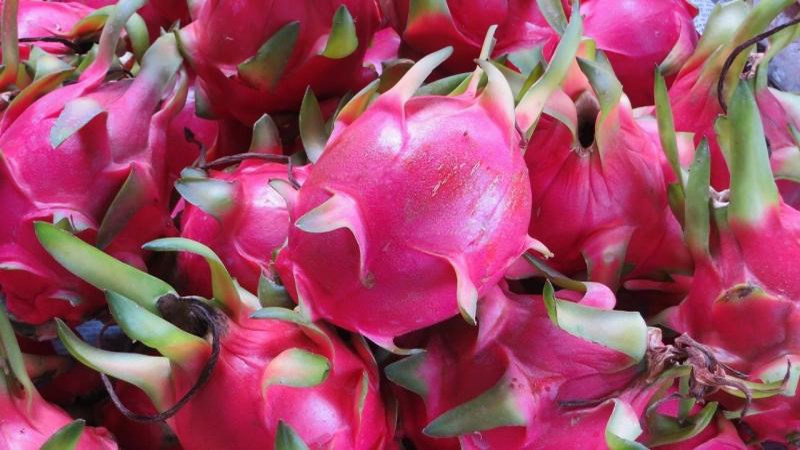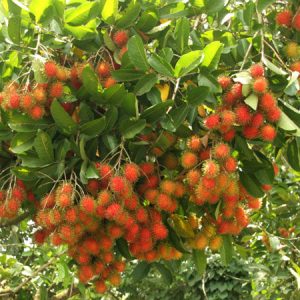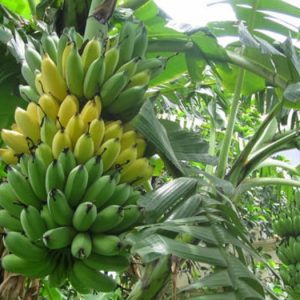

Dragon fruit cultivation comes from cactus plants grown in humid and tropical conditions such as Vietnam they are called “Thanh long – Green Dragon”. This makes dragon fruit easier to find and very popular in Asian food markets. There are some varieties of dragon fruit: white dragon fruit and red dragon fruit. With the bright pink on the outside and “scales” covering it, the dragon fruit really does resembles a dragon. It has a pale interior studded with tiny, edible seeds and and a sweet-tart flavor.
Dragon fruit nutrition: Dragon fruits are rich in carbohydrates, protein, calcium, iron and phosphor. It also provides large amounts of niacin (vitamin B3) and ascorbic acid (vitamin C). The dragon fruit is rich in water and fiber, and contains significant quantities of phytaolbumin antioxidants, which prevent formation of cancer – causing free radicals. Dragon fruit and recipe are abundant because they are delicious and versatile.
The fruit’s texture is sometimes likened to that of the kiwifruit because of its black, crunchy seeds. The seed oil contains the fatty acids linoleic acid and linolenic acid. Dragon fruit is used to flavor and color juices and alcoholic beverages, such as “Dragon’s Blood Punch” and the “Dragotini”. The flowers can be eaten or steeped as tea.
How to eat: Cut the dragon fruit into pieces you want and eat fresh. If you have an ice cream scoop handy, you may be able to scoop the dragon fruit out of the skin. Once you have the fruit out, you can slice the fruit and place it in a blender with a bit of pineapple or orange juice or by itself with some ice cubes to make a sweet and refreshing fruit drink, or cut into chunks to add to smoothies, fruit salads. You can also puree the dragon fruit and make a dragon fruit sorbet. Both the flesh and the tiny black seeds are edible, but the rind/ skin is not.
When ripe, the fruit peels as easily as a banana. Its pulp is white and gelatinous. The pulp contains many seeds that cannot be extracted. The seeds taste like cactus, giving the fruit a sweet and sour taste.
Dragon fruit (Thanh Long in Vietnamese), which may weigh up to 0.5kg with pink or dark red cover, has recently been cultivated in Vietnam. Its cover can be peeled off easily when the fruit is ripe, revealing the white gelatinous meat. The pulp contains countless tiny black seeds that cannot be extracted, giving the sweet and sour taste. Dragon fruit’s harvest season is in October, November, April and May.
















Đánh giá
Chưa có đánh giá nào.